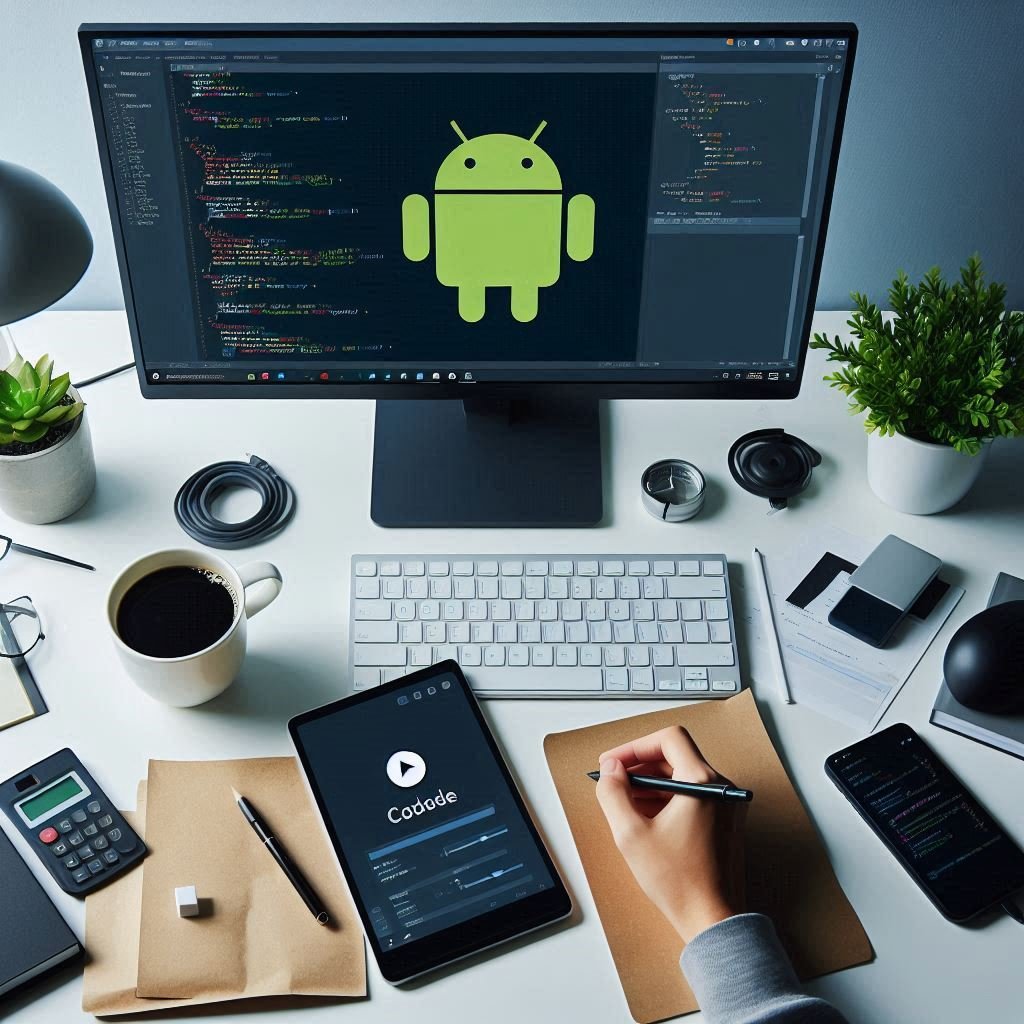
Dialogs in Android App Development Using Kotlin: A Complete Guide
Dialogs in Android are a crucial UI element for interacting with users. They can be used to display messages, ask for user input, or confirm actions. Dialogs in Android are typically modal, meaning they block interaction with the rest of the app until dismissed. In Android development with Kotlin, working with dialogs involves understanding various types of dialogs, customizing their appearance, and handling user interactions.
This article will guide you through the different types of dialogs available in Android, their usage, and how to implement them using Kotlin.
What is a Dialog in Android?
A Dialog is a small window that provides feedback to the user or asks for user input. Unlike activities and fragments, dialogs appear on top of the current activity, temporarily interrupting the user’s flow.
Android provides several types of dialogs, each suited for different purposes:
- AlertDialog: To display simple messages or prompts, ask for confirmations.
- DatePickerDialog: To let the user pick a date.
- TimePickerDialog: To let the user pick a time.
- Custom Dialog: Allows full customization with custom layouts and behaviors.
Types of Dialogs in Android Using Kotlin
1. AlertDialog
The AlertDialog is one of the most commonly used dialogs. It can display a message, ask for confirmation, or show a choice of actions.
Example: Basic AlertDialog
import android.content.DialogInterface
import android.os.Bundle
import android.widget.Button
import android.widget.Toast
import androidx.appcompat.app.AlertDialog
import androidx.appcompat.app.AppCompatActivity
class MainActivity : AppCompatActivity() {
override fun onCreate(savedInstanceState: Bundle?) {
super.onCreate(savedInstanceState)
setContentView(R.layout.activity_main)
val showDialogButton = findViewById<Button>(R.id.showDialogButton)
showDialogButton.setOnClickListener {
// Create and show an AlertDialog
val builder = AlertDialog.Builder(this)
builder.setTitle("Confirm Action")
.setMessage("Are you sure you want to proceed?")
.setCancelable(false) // Prevent the dialog from being dismissed by tapping outside
.setPositiveButton("Yes") { _, _ ->
// Handle Yes action
Toast.makeText(this, "You clicked Yes!", Toast.LENGTH_SHORT).show()
}
.setNegativeButton("No") { _, _ ->
// Handle No action
Toast.makeText(this, "You clicked No!", Toast.LENGTH_SHORT).show()
}
val dialog = builder.create()
dialog.show()
}
}
}- setTitle(): Sets the dialog’s title.
- setMessage(): Sets the dialog’s message.
- setPositiveButton(): Defines an action when the user clicks the positive button (e.g., “Yes”).
- setNegativeButton(): Defines an action when the user clicks the negative button (e.g., “No”).
This simple example shows how to create a basic AlertDialog with “Yes” and “No” buttons, each triggering a Toast message.
2. DatePickerDialog
A DatePickerDialog allows users to select a date. This is commonly used for events like setting up reminders or scheduling appointments.
Example: DatePickerDialog
import android.app.DatePickerDialog
import android.os.Bundle
import android.widget.Button
import android.widget.TextView
import androidx.appcompat.app.AppCompatActivity
import java.util.*
class MainActivity : AppCompatActivity() {
private lateinit var dateText: TextView
private lateinit var datePickerButton: Button
override fun onCreate(savedInstanceState: Bundle?) {
super.onCreate(savedInstanceState)
setContentView(R.layout.activity_main)
dateText = findViewById(R.id.dateText)
datePickerButton = findViewById(R.id.datePickerButton)
datePickerButton.setOnClickListener {
// Get the current date
val calendar = Calendar.getInstance()
val year = calendar.get(Calendar.YEAR)
val month = calendar.get(Calendar.MONTH)
val day = calendar.get(Calendar.DAY_OF_MONTH)
// Create and show DatePickerDialog
val datePickerDialog = DatePickerDialog(this, { _, selectedYear, selectedMonth, selectedDay ->
// Format and display the selected date
dateText.text = "$selectedDay/${selectedMonth + 1}/$selectedYear"
}, year, month, day)
datePickerDialog.show()
}
}
}- DatePickerDialog: Allows users to pick a date from a calendar.
- OnDateSetListener: A listener that responds with the selected date once the user confirms.
The DatePickerDialog is triggered by a button click, and the selected date is displayed in a TextView.
3. TimePickerDialog
A TimePickerDialog is used for letting users select a time, such as setting an alarm or reminder.
Example: TimePickerDialog
import android.app.TimePickerDialog
import android.os.Bundle
import android.widget.Button
import android.widget.TextView
import androidx.appcompat.app.AppCompatActivity
import java.util.*
class MainActivity : AppCompatActivity() {
private lateinit var timeText: TextView
private lateinit var timePickerButton: Button
override fun onCreate(savedInstanceState: Bundle?) {
super.onCreate(savedInstanceState)
setContentView(R.layout.activity_main)
timeText = findViewById(R.id.timeText)
timePickerButton = findViewById(R.id.timePickerButton)
timePickerButton.setOnClickListener {
// Get the current time
val calendar = Calendar.getInstance()
val hour = calendar.get(Calendar.HOUR_OF_DAY)
val minute = calendar.get(Calendar.MINUTE)
// Create and show TimePickerDialog
val timePickerDialog = TimePickerDialog(this, { _, selectedHour, selectedMinute ->
// Format and display the selected time
timeText.text = "$selectedHour:$selectedMinute"
}, hour, minute, true)
timePickerDialog.show()
}
}
}- TimePickerDialog: A dialog that lets users select a time.
- OnTimeSetListener: A callback that captures the selected time.
In this example, when the user clicks the “Select Time” button, a TimePickerDialog is displayed, and the selected time is shown in a TextView.
4. Custom Dialog
Sometimes, a standard dialog may not fit your needs. In these cases, you can create a custom dialog with a custom layout.
Example: Custom Dialog with Custom Layout
import android.app.Dialog
import android.os.Bundle
import android.view.View
import android.widget.Button
import android.widget.EditText
import androidx.appcompat.app.AppCompatActivity
class MainActivity : AppCompatActivity() {
override fun onCreate(savedInstanceState: Bundle?) {
super.onCreate(savedInstanceState)
setContentView(R.layout.activity_main)
val showCustomDialogButton = findViewById<Button>(R.id.showCustomDialogButton)
showCustomDialogButton.setOnClickListener {
// Create and configure the custom dialog
val customDialog = Dialog(this)
customDialog.setContentView(R.layout.custom_dialog_layout)
val userInput = customDialog.findViewById<EditText>(R.id.userInput)
val submitButton = customDialog.findViewById<Button>(R.id.submitButton)
// Handle the submit button click
submitButton.setOnClickListener {
val inputText = userInput.text.toString()
// Do something with the input
customDialog.dismiss()
}
// Show the custom dialog
customDialog.show()
}
}
}- Dialog.setContentView(): Sets the custom layout for the dialog.
- findViewById(): Accesses views within the custom dialog layout (e.g.,
EditText,Button). - customDialog.dismiss(): Closes the custom dialog after the user submits the input.
This example demonstrates how to create a custom dialog using a custom XML layout. The dialog contains an EditText for user input and a Button to submit the input.
Conclusion
Dialogs are an essential part of Android app development, providing an interactive way to engage users with simple messages, choices, or user input forms. In Kotlin, working with dialogs is straightforward, and Android provides built-in support for different types of dialogs like AlertDialog, DatePickerDialog, TimePickerDialog, and custom dialogs.
By using dialogs effectively, you can create more interactive and user-friendly applications. Whether you’re confirming an action, getting user input, or presenting a simple message, dialogs help enhance the user experience. Understanding how to implement these dialogs in Kotlin is an important skill for any Android developer.


